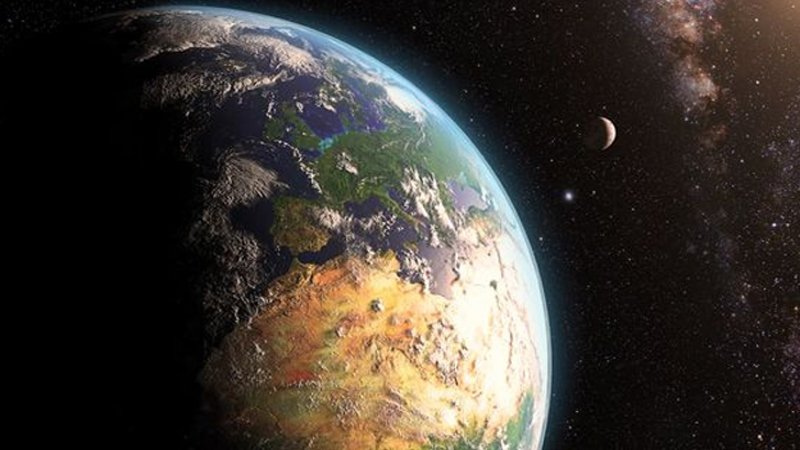।। Mowshumi Sharmin ।।
The overarching vision of human activity is hardly ever articulated in the policy arenas
The Anthropocene has seen a new era since the industrial revolution in which human induced actions are playing epoch making role in global environmental change. Recently due to halt of anthropogenic activities under COVID-19 outbreak, skies are bluer, marine life is more vibrant and pollution seems to have fallen extensively across the world. Earth embraces the change under COVID-19 quarantine unequivocally showing silver linings across the clouds. Only human beings are chained at their home but birds and wild life are free as nature scores victory. Free movements of wildlife are observed in human controlled urban areas as well.
Put differently, civilization is threatened with intense and escalating manufactured environmental emergencies. Global warming is now extensively acknowledged as an instantaneous threat to humankind. The 2014 report of the Intergovernmental Panel on Climate Change (IPCC) demonstrates, only a few years are left to thoroughly decarbonize the global economy to avoid disastrous global warming. There is no silver bullet to achieving this and most countries are grasping with such challenges. Yet, in this ghoulish atmosphere the improvement in the environs is the harbinger of hope in the times to come. Thus the time is ripe to build on the current momentum leaving all potential threats behind.
Though environmental emergencies could potentially threaten the very existence of human life on earth, it has so far received less public attention. The threats consist of the loss of biodiversity, reduction of water reserves, ocean acidification and decline of soil fertility. The Lancet Commission on Pollution and Health estimates more than US$ 4.6 trillion per year, or 6.2 per cent of global GDP is gone astray due to environmental contamination. In 2012 DARA and the Climate Vulnerable Forum estimated the economic cost of global warming is more than US$ 1.2 trillion per year, reducing the world’s economic output by 1.6 per cent annually.
Against this backdrop, it is important to emphasize that nature generally tracks a usual renovation process to control many of the environmental extremities in order to save the earth. Countless species become extinct following such distorted climatic events. But now nature took its toll to soothe the world as a unitary ecosystem. Under COVID-19 closure we get a glimpse of a future sustainable earth preserving our scarce resources and reducing carbon footprint.
From satellite imagery environmental researchers as well as scientists have evaluated the air quality and predicted the emergence of cleaner air during early lockdown. Due to pandemic induced shutdown and stop of dominant activities of human being, there is reduced water and air pollution including CO2 and NO2 emissions. Findings of Carbon Brief postulated that compared to same time in 2019 there is 25% reduction in emissions in China during February 2020 and the amount of nitrogen dioxide also dropped by 36% due to less fossil fuel burning.
Italy, Spain, and France – the three countries which imposed lockdowns much earlier than other European nations saw the nitrogen dioxide levels drop as well. Particulate matter (PM2.5) was suddenly down improving the air quality index in London, Cardiff, and Bristol ever since the shutdown. Rationing of human induced pollution paves the way to improve the environment.
In light of this, it is encouraging that after three decade dolphins were visible in Cox’s Bazar and sea creepers with blooming blossoms and crabs and various other marine species were the evident of natural rejuvenation under COVID-19 closure. This entire phenomenon showed a glimpse of how to manage the environment for sustainability.
In relation to the above context, human induced activities including industrialization, urbanization, fossil fuel exhaustion, vehicular movements, and overuse of chemicals and fertilizers for agriculture and discharges of effluents to water bodies are beyond the limit and took the pollution to an unhygienic level. It gives the impression that closure to combat COVID-19 has opened the door for nature to her for self-regeneration to revive her individual ecosystems.
As it boils down, the present environmental rejuvenation might not have a long term impact unless the society cares for the environment and changes its attitude. The planet might lose the rejuvenated atmosphere with a view to restoring the past splendor of nascent growth, central focus of the competitive world arising as a binding constraint at the outset lurking beneath the surface.
The overarching vision of human activity is hardly ever articulated in the policy arenas. A blend of policy and structural changes with national and global political will and sentient determinations to lessen global warming due to greenhouse gas emissions at the individual, national and global level with better awareness is desirable to bring out tangible outcomes.
For sustainability of economic development, resource efficiency needs to increase at least at the same rate as economic output. Nevertheless, ‘out-and-out decoupling’ is not impossible. Massive resource efficiency jumps are possible by using renewable energy, smart information and communication technology, utilizing energy-saving technologies and above all changes in consumer behavior. As a decarbonized power generation process electricity production needs to move entirely from fossil fuel to renewable sources, the shift towards circular economies where waste is reduced, reused or recycled is expected to lessen ecological footprints.
The writer is an Assistant Director (Research) at Bangladesh Institute of Governance and Management (BIGM), Sher-e-Bangla Nagar, Dhaka. E-mail: mowshumi405@gmail.com

